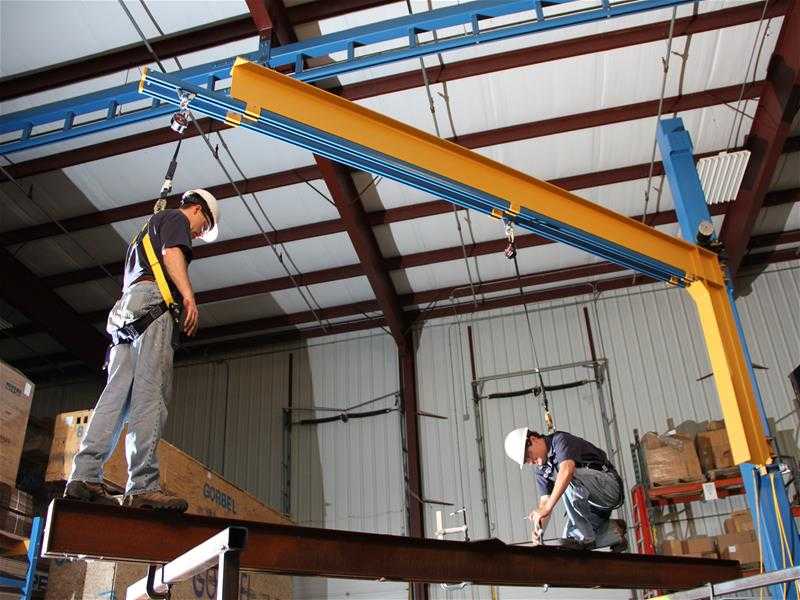Did you know that there were 297 total crane-related deaths reported from the period of 2011 to 2017 (an average of 42 per year)? And over half of the crane-related deaths were related to workers being hit by some object or equipment, particularly a falling object or equipment.
That’s why it’s so important to have proper procedures set in place to ensure crane safety no matter who’s operating the machinery, be it a newbie on the job or a veteran crane operator.
If you run a business where you use construction equipment like cranes on a routine basis, then it’s time for you to read this article below on 7 crane safety tips you cannot ignore.
1. Use the Right Kind of Crane
There are many kinds of cranes out there, both mobile and fixed, so it’s important to pay attention to the job at hand and strategize carefully what kind of crane would be most suitable for it.
Fixed cranes are usually used in huge construction projects or industrial settings. Some mobile crane types to be aware of are carry-deck cranes, all-terrain cranes, crawler cranes, and rough-terrain cranes.
2. Ensure Your Crane Operator Has Proper Training and Certifications
When you are running low on staff or you have a situation where your crane operator left without giving much notice, you might be desperate to hire anyone who seems to know what they are doing. But these decisions made in haste are usually the ones you regret the most.
Take your time when hiring a crane operator as it can mean the difference between life and death. Ensure that they have all the necessary qualifications, education, and certifications. This will ensure they are a reliable, knowledgable, experienced, and safe crane operator.
3. Read the Crane Operator Manual
Indeed, most people don’t bother even opening up the many manuals they receive with their home electronics. Who has time to do that?
But with massive construction equipment like cranes, you must treat the operator manual like it’s the Bible and read it regularly. If not daily, then at least weekly would be highly recommended.
There are many bad habits crane operators fall into as using a crane becomes routine and almost mind-numbing. But reading the operator manual and keeping on top of repairs, fixes, and utilizing other nuggets of wisdom will ensure that your crane is used as safely as possible.
4. Don’t Miss Even a Single Daily Operator Check
Set in place a mandatory process where your crane operator would have to begin and end each day with a check of the crane and its related equipment. Have a log or daily diary in place, where your crane operators can tick off all the necessary checks performed every single day so that you are always reassured that crane operations are safe and injury-proof.
Check the daily logs weekly or biweekly to ensure that your crane operators are doing their due diligence. And let them know that their job is on the line here if they don’t do the checks as necessary every single day. Skipping even a single day could spell disaster, so don’t let them do as they please.
5. Rig the Load Correctly
As iterated earlier, the most hazardous part about operating cranes is workers on site being hit by falling objects or equipment not rigged properly upon a crane. That’s why a complete understanding of force, weight distributions, and rigging techniques will ensure that even unstable, uneven, and heavy loads will be rigged on properly without any danger of falling.
6. Use Proper Communication and Hand Signals

You are probably aware that there are a standard set of hand signals and communication protocol already in place to ensure safe crane operation. Construction safety depends on the proper usage of these hand signals.
A qualified signal person who sits in the lift will be able to communicate effectively to the crane operator who cannot see everything going on ground-level, being so high up.
These standard hand signals are used to communicate the following to the crane operator:
- Which direction to travel with the equipment
- When to swing and lift the boom
- When to hoist and lower the rigged load
- When to stop the crane or dog everything
- And more
Of course, you can also use wireless radios when on-site if those work better for you, but having a qualified signal person is always a safe add-on. Remember, it’s always better to be safe than sorry, especially when it comes to crane safety requirements.
Crane Safety Must Be a Priority for All Involved
Crane safety is not a joke, and everyone who is involved in operating heavy construction equipment like cranes should be cognizant of and review all crane safety tips every single day. It’s easy to get into the routine of things and start forgetting simple tasks like pre-operating checks or engine checks.
If you are looking for a crane & hoist solution in St. Louis, MO or Kansas City, KS, contact Shannahan Crane & Hoist Inc. for a quote. We have been in business for 60 years and carry all major lines of product.
